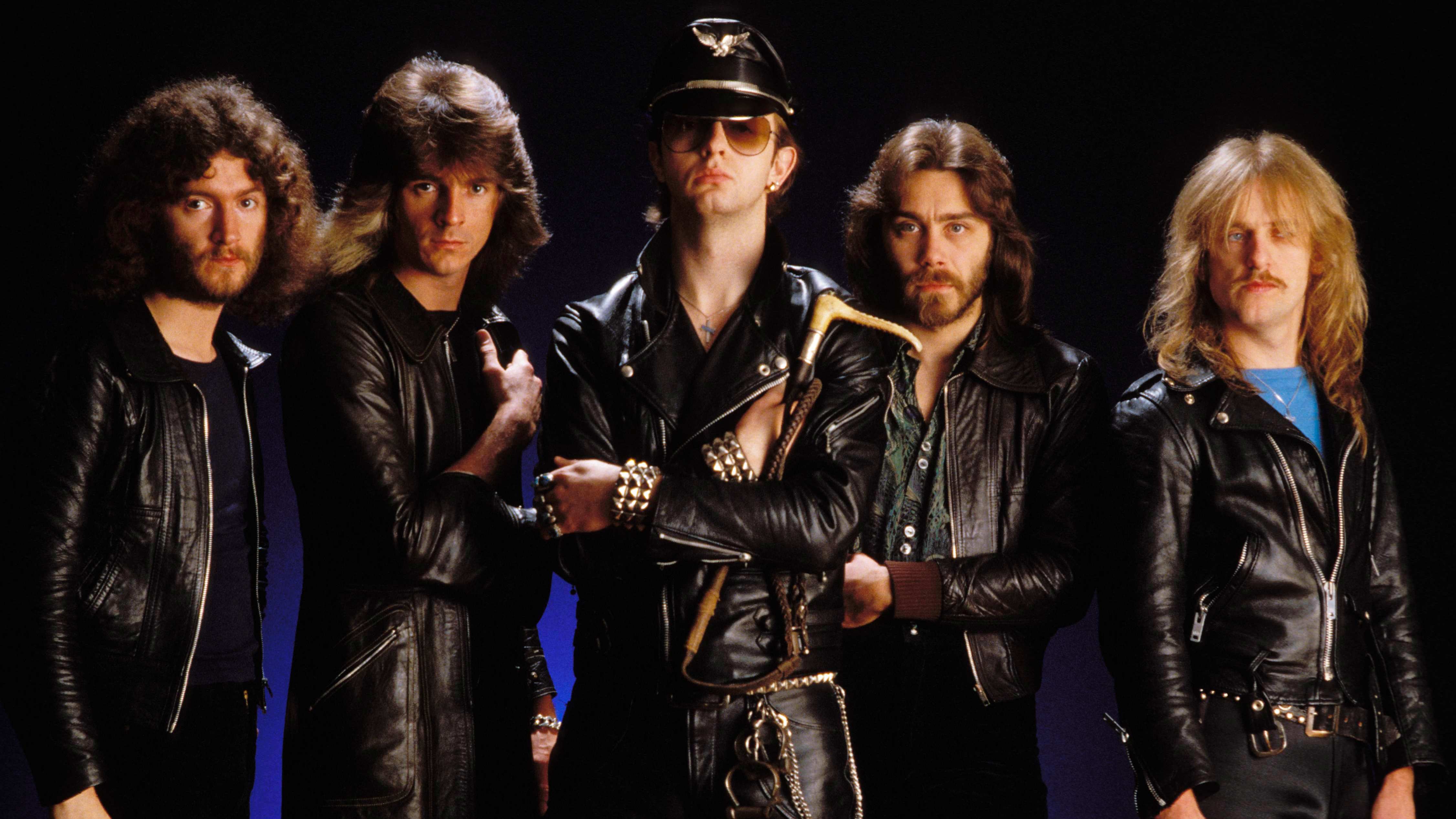Kelis vs Beyonce. Sampling vs interpolation. Who's right and what's what?
The lines between 'lifts', 'lends', 'samples', 'replays' and more just got crazy blurred… Here's the truth

Inspiration, homage, sampling, interpolation, replay, insane generosity, nefarious theft and more. Today there are so many ways to slice the cash from a music release and confusion is rife as to who owns what and who should pay who.
But don’t worry. Our indispensable guide to dividing the dough will entertain, inform and hopefully help keep you on the right side of the law.
Sample this
Things have gotten greatly confused in more recent times thanks to the overwhelming number of ways of mangling, reusing and re-interpretting audio and amalamating previous performances and bits of audio into your project.
Things used to be much simpler. So let’s start at the beginning.
Before digital sampling if you wanted to ‘use another artist's recording or piece of music’ you simply asked your band to play the same notes. With perhaps the same kind of sound. And perhaps elicited the same kind of response and chart success.
There are straight musical lifts. Take for example Coldplay’s 100% reappropriation of the melody for Kraftwerk’s 1981 Computer Love in their 2005 track Talk. The band have clearly stolen Kraftwerk’s music… But this is not sampling. The band play the melody on their own guitars (rather than have Kraftwerk perform it on their synths) and so the recording is all their own. It’s the musical rights that are split with the members of Kraftwerk justly getting a writing credit on the track.
But what about less up front, perhaps shadier dealings?
Get the MusicRadar Newsletter
Want all the hottest music and gear news, reviews, deals, features and more, direct to your inbox? Sign up here.
David Bowie’s The Jean Genie was at number three on the UK charts on 14 January 1973 while just one place ahead at number two was the released-five-weeks-later Blockbuster by The Sweet. (Both classics being held off the top by Long Haired Lover From Liverpool by Jimmy Osmond…)
Give the pair a listen below and remember both highly regarded smashes are on the chart at the same time just one place apart…
They are practically identical.
So are we listening to sampling? Nope, that wasn’t even invented until 1979’s Fairlight. These are distinct separate recordings that – technically – don’t share a single identical element. But the similarity is undeniable. Let’s just label this ‘homage’ or ‘inspiration’.
So who owes who what in this case. Answer: It depends. It depends on how far out of joint the original track’s owners and creators get. In this case Bowie and The Sweet did not share a spat and the ‘who stole from who?’ debacle never happened (except in the mind of a MusicRadar journalist writing this article almost 50 years later).
But such leniency isn’t usually the case. It’s far more common for artists and bands to cry foul and seek recompense when their genius creation is allegedly copied in order to ride its coat tails to success.
When great tracks turn out 'bad'
Take for example Men At Work’s global one-hit-wonder Down Under which was successfully sued by the rights holders of kids’ nursery tune The Kookaburra Song 28 years after its release.
The songs are clearly different, but the 11 note section in the track’s jaunty flute refrain sealed the band’s face, retroactively entitling the rights holders to 28 years of royalties that the band had already spent… This is the moment where ‘homage’ passes into legally endorsed ‘plagiarism’.
Likewise Rolf Harris who successfully got his claws into Adam and the Ants after the brazen lift from War Canoe for Ant’s Prince Charming. "Don't you ever [copy my tune without giving me a writing credit]…"
And as for the writers of Barry Manilow’s Can’t Smile Without You going after George Micheal for similarities to Last Christmas? The pair settled out of court. (Though personally we reckon it’s the writers of Kool And The Gang’s Joanna that should be most aggrieved here…)
That said there are just as many failures as wins to be had here. See Sami Switch’s failed attempt to prove that Ed Sheeran’s “Oh I, Oh I, Oh I” from Shape Of You was a musical lift from Switch’s “Oh why, Oh why, Oh why” from his track of the same name, a battle that kept $23million in royalties hanging in limbo for over a year.
Coincidence? Yes. But illegal? The judge says not. After all, as Sheeran said at the time, “There's only so many notes and very few chords in pop music, coincidence is bound to happen if 60,000 are being released every day on Spotify. That's 22 million songs a year and there's only 12 notes that are available."
To be clear. NONE of this is sampling. Playing some similar notes with similar timing is simply homage or inspiration. You might get away with it (depending on how close you get or how much you borrow and the generosity good nature of the original creator) or you might not. The risk is all yours.
So, as long as you don’t copy the tune you’re OK, right?… Um… Well, let's address the real curio in this whole mess.
Got to give up $5million…
We’re referring to the case that the family of Marvin Gaye brought against the writers of Robin Thicke and Pharrell Williams' 2013 global smash Blurred Lines, claiming that Gaye’s track Got To Give It Up was copied/reappropriated/sampled and that someone somewhere had, indeed, ‘got to give it up’…
The tracks kind of share a tempo… and they kind of sound the same… with a similar tapping, shuffling beat… But outright plagiarism?
Remarkably, yes. Despite an appeal Judge deciding that the two songs "differed in melody, harmony and rhythm" and Circuit Judge Jacqueline Nguyen added that the ruling "strikes a devastating blow to future musicians and composers everywhere" it was decided that 50% of the royalties ($5m at the time) were due to Gaye’s family. That’ll teach ‘em for that video…
So next time you’re saying ‘Why don’t we make a track like [insert hit here]… beware.
Enough blurred lines. Let’s get a little more cut and dried. So if all of the above ISN’T sampling… then what IS?
What is sampling and what is interpolation?
Good news. Despite the ‘new’ digital technology involved, sampling is actually the simplest concept to understand when deciding where the money and credit ought to flow.
Sampling involves recording a piece of audio digitally into a sampler and playing it back as part of your own new musical creation. How much you take or use is up to you (though in the early days was hugely dependent on the system memory and sample time available as a result). After dancing through a grey zone soon after its invention, sampling was deemed a breach of copyright leading to countless lawsuits and splitting of cheques ever since.
Which is fair enough. A sampled phrase IS the exact same melody (the property of the musical rights holder) performed by the exact same musician (who most likely got paid for playing it originally) recorded by the same engineers and producer (likewise) with the entire audio recording owned by the record company that financed it.
Something has got to give.
Sampling means that money has to change hands. The artist gets a cut for their performance as does the tracks' musical copyright holder (usually the tracks writer… provided they didn’t foolishly sign it away or sell it on to a global mega-corp for a huge advance). But that’s another story.
You might get away with it, of course. There are millions of tracks out there built entirely from tiny indistinguishable, often repitched and reprocessed samples that are impossible to recognise. So long as the ‘owner’ can’t 100% recognise their work and would be at great risk of embarrassment and costly legal bills IF they were to sue – bingo – you just got off scot free.
But what if the sampling becomes a little more… blatant?
Well, then you’ve got to come to an arrangement with the recorded rights holder. An upfront payment. A split of the royalties. A writing credit. It’s all TBD. Every case is different with the nature of the sample being used (length, prominence) usually being a major factor in how much money has to change hands.
But you could just risk it, right?
Sure thing, but we’d suggest you're better off getting your sample ‘cleared’ every time. Take for example The KLF Vs Abba. The KLF had to withdraw and pulp every copy of their debut LP 1987: What The Fuck Is Going On because their track The Queen and I featured a straight 43-SECOND LONG lift of Abba’s Dancing Queen with zero permission or payment to the band themselves…
Brave? Yes. Foolish to the point of idiocy? Most definitely. And if the track hadn’t been so bloody awful maybe they’d have got away with it.
Again, things can get a little grey around the edges…
As hip-hop, rap, pop, R'n'B increasingly mashed through the 80s into the 90s it seemed that anything and everything was up for grabs.
The situation came to a head – and a benchmark case was settled – with Been Around The World by Puff Daddy And The Family featuring The Notorious B.I.G and Mase. The track is perhaps the ultimate ‘blurred line’.
The sample (ie, the music) is David Bowie’s Let’s Dance. It’s a sample. Not a replay. Thus Bowie shares a writing credit and a performance credit. (As to who in Bowie's band got what, that depends on what they signed up for at the time of recording.) But Lisa Stansfield’s vocal line? The main hook and title of the track, now sung by Biggie Smalls? That’s not sampling. Now we’re into the world of ‘interpolation’.
Nice tune. I'll take it
Interpolation is a re-performance of a performance, usually note for note but presented in an entirely different musical scenario. This is not a sample and is often mis-named as such. Lisa Stansfield does not appear on this record. Lisa Stansfield is not sampled. Thus Lisa justly gets a writing credit but not a penny of the performance.
So if they’re not on the record, you don’t owe them?
Kinda… An interesting side option should you want to reappropriate someone else’s music but keep a little cash is that – rather than sample a track – have a sound-alike band recreate it. That way the performance rights are all yours – ‘you’ performed it – and only the rights to the music (usually its writers) are due to the track’s owners.
Inexplicably popular UK 90’s chart-toppers Jive Bunny did exactly that for hits such as Swing the Mood and That’s What I Like. What started out as sample-based mash-ups of the original popular rock and roll tunes on board, actually saw the light of day on release as meticulous ‘replays’, cutting the original artist out of the picture and saving its makers a fortune.
So let’s slide seamlessly to the present day. Beyonce: What the hell is going on?
Well, it seems that after years of dodging bullets, telling lies, courtroom battles, stress, beefs, bankruptcy and even death, musicians and producers are starting to play a little more fairly.
I'm going to show you love
Whether they’ve made enough money already, or can’t be pestered to battle for the pennies that are still left from streaming and selling music, it seems that these days writing credits and ‘points’ on tracks (a share of the profits) are slung around with abandon.
Take for example Taylor Swift’s Look What You Made Me Do, which happily parted with cash to the writers of Right Said Fred’s I’m Too Sexy despite the only similarity between the tracks being the loosely repeated ONE NOTE rhythm of the chorus vocal.
Generous? Certainly. Necessary? Certainly not.
It seems that after the blurred lines of Blurred Lines, today's stars would rather cough up, come clean and share the love rather than be tarred with the same messy, misogynous brush that cancelled Thicke and Williams' ‘of its time’ smash.
Thus Beyonce doing likewise: ‘Owning up’ and co-crediting the writers of Robin S’s club classic Show Me Love for Break My Soul, the lead track from her critically acclaimed new album Renaissance.
But what exactly are we listening to? Again, this has now been written into musical history as ‘a sample’ but it’s actually anything but.
This is not Robin S’s track being sampled. It’s not even a replay, as the notes and rhythm are different. It's not interpolation. Robin S does not appear on Break My Soul. Neither does any audio or musical copyright belonging to the track’s composers Allen George and Fred McFarlane. This is – quite simply – Beyonce’s team using the same Organ 1 preset on a 1988 to 1995 Korg M1 keyboard (one of the most popular sounds on one of the world’s most popular synths ever) to play a completely different tune…
That is the ONLY similarity between the two, and yet Beyonce (and team) bestow shared writing credits with Show Me Love’s creators.
And – bizarrely – the situation gets worse/weirder. We’d suggest that it’s actually producer Stonebridge, (aka Sten Hallström) who deserves the credit as it was HE who added the M1 organ bass to his remix that subsequently became the hit. And George and McFarlane’s original recording of the track? Not a peep.
So while Freddie Ross and Adam Pigott, the writers, artist and producers of Explode by Big Freedia which IS sampled all over Break My Soul (and arguably sets the tone and tension for the whole track) DO rightly get their writing credit, the selector of the much discussed sound, the creator of its melody and the player and programmer of its notes, does not.
Go figure.
Kelis Vs Beyonce: Who's right?
So why be so generous in one direction and then go a little weird in the other? We’re talking about Beyonce’s Energy, another track from the recently released Renaissance, whose rhythm bears a striking similarity to Milkshake by Kelis.
So much so that Kelis took to Instagram to call out Beyonce after fans were delighted by their ‘collaboration’…
A post shared by Kelis (@kelis)
A photo posted by on
Kelis was so unhappy that it has prompted Beyonce to remove the offending sample from the track. Listen to Energy now and there’s no Kelis on board.
YouTuber Jarred Jermaine handily lines up the original and re-released version without Kelis’ vocals on board (below). So what are we actually listening to? Listen closely…
Despite being widely reported as ‘interpolation’ (including in the video above) this is actually a sample.
What we’re hearing in the original Energy release is the backing track from Milkshake with Kelis’ actual vocals from that track, chopped up as part of the lift of the rhythm. Kelis is appearing on Energy as a vocalist and as such would, we'd suggest be due some degree of thanks… which it would appear was not forthcoming…
The fact that Pharell Williams and Chad Hugo – the writers of Milkshake – receive co-writing credits on Energy essentially proves the presence of Milkshake on board. And the fact that the track now no longer features the chopped up female vocal that appeared on the original AFTER Kelis’ objection (do listen VERY carefully) – for us – proves that that was Kelis on the track.
But at least she kind of got what she wanted… Kelis no longer appears on Energy. But is that the 'win' as Kelis has claimed?
A post shared by The Shade Room (@theshaderoom)
A photo posted by on
Who can say? But we're guessing that a couple of Christmas card lists just got revised.
The big takeaway from this whole messy business?
Next time you're slinging wavs around or reaching for the record button, spare a thought for the music you’re loving and the artists who created it.
And take a sample of that.


Daniel Griffiths is a veteran journalist who has worked on some of the biggest entertainment, tech and home brands in the world. He's interviewed countless big names, and covered countless new releases in the fields of music, videogames, movies, tech, gadgets, home improvement, self build, interiors and garden design. He’s the ex-Editor of Future Music and ex-Group Editor-in-Chief of Electronic Musician, Guitarist, Guitar World, Computer Music and more. He renovates property and writes for MusicRadar.com.










